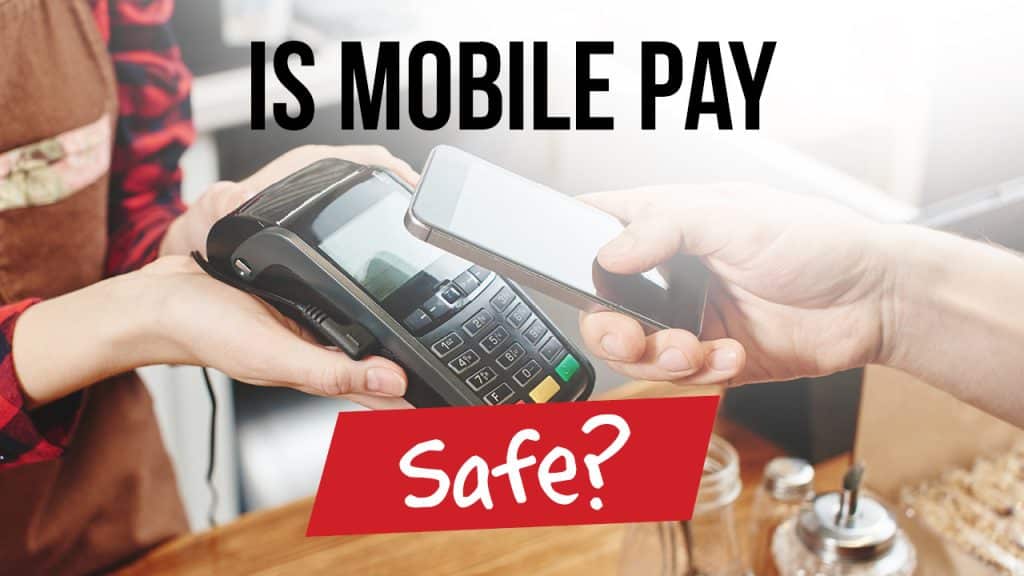Mobile Wallets & Payment Apps: is Mobile Pay Really Safe?

Still reticent to dive into the world of mobile payments? It’s easy to understand why. You’ve undoubtedly come across intimidating terms like ‘ransomware,’ heard horror stories about identity theft, or even had to scrub your own device after infestation from a virus (the days of LimeWire aren’t that far behind us). The idea of trusting your personal funds to a digital environment might seem perilous – but with a little due diligence, mobile pay through digital wallets, banking apps, and payment apps are arguably safer than a pocket full of cash or even your credit/debit card.
WHAT IS A MOBILE WALLET?
Mobile wallets are apps and digital systems that store payment information (and other personal identification) for use on your mobile devices. If you’ve heard the term ‘mobile pay,’ it refers to these digital transfer features. Most often, this means using a credit or debit card via a smartphone. Digital wallets have become even more sophisticated over the years, allowing you to store gift cards, loyalty cards, tickets to anything from movies to transportation, boarding passes, and more. Basically – if it’s important and you can lose or forget it, you most likely can store it in a mobile wallet! Some of the most popular mobile wallet apps include Apple Pay, Google Pay, and PayPal.
Mobile pay is also available through payment apps. Working similarly, mobile payment apps are affiliated with brands and businesses, like Starbucks, Walmart, and many gas stations. There are also independent person-to-person mobile payment apps like Venmo, Cash App, and Zelle. Considering that some of these apps get funds transferred through another digital wallet service (for example, reloading a gift card in the Starbucks app with funds from your PayPal account), the line between them is a little blurry, and the distinction is not always relevant.
IS MOBILE PAY SECURE?
The good news is that mobile pay with digital wallets is (arguably) more secure than other forms of payment! Digital transfers benefit from multiple layers of security, with the most robust being a process called “tokenization.” Tokenization takes your sensitive data (a credit card number, for instance) and converts it into a random string of numbers – the ‘token.’ The systems that need your information will convert the token back into readable information – but data thieves would only receive a confusing mix of useless digits. Tokenization layers with other forms of digital encryption, password protection on your accounts, and two-factor authentication systems to form a maze of safety measures around your data.
With mobile wallets being installed mainly on smartphones, it does raise the issue of safety from the device’s perspective as well. The apps themselves might be a virtual vault – but what happens if your mobile device slips out of your pocket and into nefarious hands? Here, the advantages of digital security features step in again. Biometric safeties like thumb print and face ID are formidable defenses against thieves. If you notice a missing phone fast enough, most carriers offer ‘missing phone’ services to locate a device – or in the case of theft – allow you to impose a lock-out or wipe all data remotely.
All these protective measures don’t mean you should ignore any additional due diligence! Setting strong passwords or using a password manager is still an essential step in keeping your mobile wallet apps secure. In addition to the obvious measures, avoiding public Wi-Fi when using mobile pay is recommended to minimize routes for hackers to access your device.
HEALTHY HANDS-OFF
Among the many advantages: it’s better for your health! Payment apps are frequently contactless, meaning you avoid tapping high-traffic touchpads or grabbing a stylus that hundreds of people have grabbed before you. It’s not a foolproof way to avoid flu and other illnesses, but it can give you a little peace of mind when you see the person ahead of you in line sneeze up a storm before keying in their purchase.
DO I EVEN NEED A CREDIT/DEBIT CARD?
You’re confident and comfortable with diving into a new world of digital payments – so should you bury those cards in the ‘miscellaneous’ drawer at home? No!
While mobile wallets will likely be your go-to form of payment from now on, it’s recommended to carry a “backup” form of payment. Phones can lose battery or experience technical failures. Not all card readers accept contactless payments, and cash-only storefronts are still a necessity in some places. While cards have their own sets of safety concerns, and cash has no safeguards if stolen, these traditional forms of payment will still have utility in the foreseeable future. Their days as the main way to pay, however, just might be at an end.
MOBILE PAY: THE QUICK DOWNLOAD
Mobile pay with digital wallets and payment apps is rising in popularity, convenience, and safety. With a wide array of overlapping security measures like tokenization to protect your funds, it’s one of the safest ways to transfer money ever. Now is the time to embrace your mobile pay options, get the hang of using your mobile wallet, and keep your pockets lighter and safer.
Posted In: Checking




